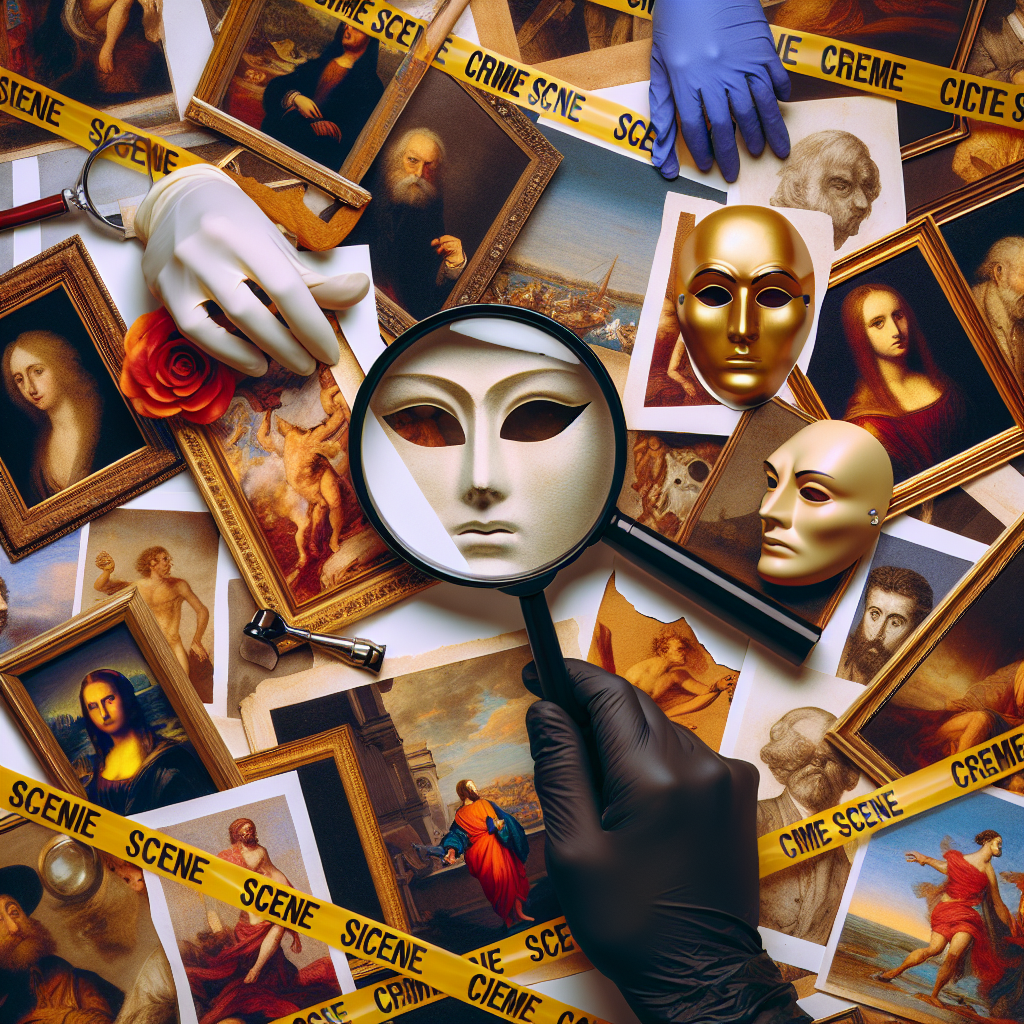The Art of Deception: Famous Art Heists and the Conspiracies that Followed
Art heists are often romanticized in films and novels, feeding our fascination with the audacious subterfuge involved. Let’s pull back the canvas and reveal some of the craziest conspiracy theories associated with these captivating capers.
The Isabella Stewart Gardner Museum Heist and the Mob Connection
One of the most infamous art heists in American history took place at the Isabella Stewart Gardner Museum in 1990, when thieves stole 13 pieces of art valued at around half a billion dollars. The culprits, posing as policemen, have never been caught and the masterpieces remain lost. A prevailing theory suggests that the heist was orchestrated by the organized crime syndicate, the Boston Mob. The Federal Bureau of Investigation (FBI) even released a statement asserting that the theft was likely mob-related. However, despite investigations and a hefty reward offer, the case remains unsolved and the art remains at large.
The KGB and the Amber Room
The Amber Room, a world-renowned chamber decorated in amber panels backed with gold leaf and mirrors, was a breathtaking masterpiece of Baroque art. Stolen by Nazi Germany during World War II, the room was moved several times before it disappeared in 1945. The fate of the Amber Room is one of the greatest mysteries of the art world, giving rise to several conspiracy theories.
The most popular of these theories involves the Soviet secret police, the KGB. Some believe that the KGB discovered the Amber Room and kept it hidden due to its enormous cultural significance. The logic here: what better cover for its disappearance than blaming it on the flailing Nazi regime? Alas, this enthralling theory, while titillating, has yet to produce any convincing evidence.
The Picasso Heist and the Space Aliens
Few art heists marry high art and high strangeness quite like the theft of Picasso’s “Dove with Green Peas.” Stolen in 2010 from the Paris Museum of Modern Art, this masterpiece’s loss resulted in a bizarre theory: one that involves extraterrestrial beings. Yes, you read that right. This fringe conspiracy theory postulates that aliens, not humans, are behind some of the most daring art heists.
The theory argues that certain pieces of art emit a unique type of energy attractive to aliens. Of course, with no concrete evidence or even an iota of scientific backing, this theory is arguably more fiction than fact. Still, it’s an amusing idea that beings from another planet might share our appreciation for Picasso!
The Ghent Altarpiece and the Nazi Treasure Map Theory
The 15th-century Ghent Altarpiece has been targeted by art thieves for centuries. It was even pillaged by Nazi forces during World War II. Among the most prevalent conspiracy theories about its repeated thefts is one suggesting that the altarpiece contains a detailed map to a hidden Nazi treasure trove.
This theory, perpetuated by popular movies and adventure novels, holds that the ornate detail of the altarpiece hides cryptic symbols and coded messages that, once deciphered, reveal the location of a hidden stockpile of Nazi gold. The legend of the Ghent Altarpiece continues to feed the imagination of conspiracy theorists and armchair treasure hunters alike. Yet, much like the rest of our highlighted theories, this one too remains unproven.
The Mona Lisa Theft and the Louvre Publicity Stunt Theory
Leonardo da Vinci’s masterpiece, “Mona Lisa,” was stolen from the Louvre in 1911. While the painting was recovered two years later, some believe that the theft was not the work of a desperate artist but a sly publicity stunt organized by the Louvre itself. Skeptics question whether the museum, struggling with decreasing visitor numbers, staged the theft to attract attention and boost ticket sales.
This theory treads the thin line between irrational conspiracy and plausible marketing strategy, further blurring the enigma surrounding one of art’s most iconic figures. Are these da Vinci code type speculations true or just part of the enduring mythos of the art world?
The Lasting Mystery of Art Heists
To date, these art heists and the theories surrounding them remain unsolved, continuing to captivate us. Whether it’s possible mob involvement, Soviet misdirection, interstellar art critics, secret treasure maps hidden in plain sight, or desperate publicity stunts, these theories speak to our urge to explain the unexplainable. Perhaps this is why these art theft conspiracy theories, however unlikely, continue to intrigue us. Because in the end, the allure of great art, like the allure of an unsolved mystery, is irresistibly compelling.
